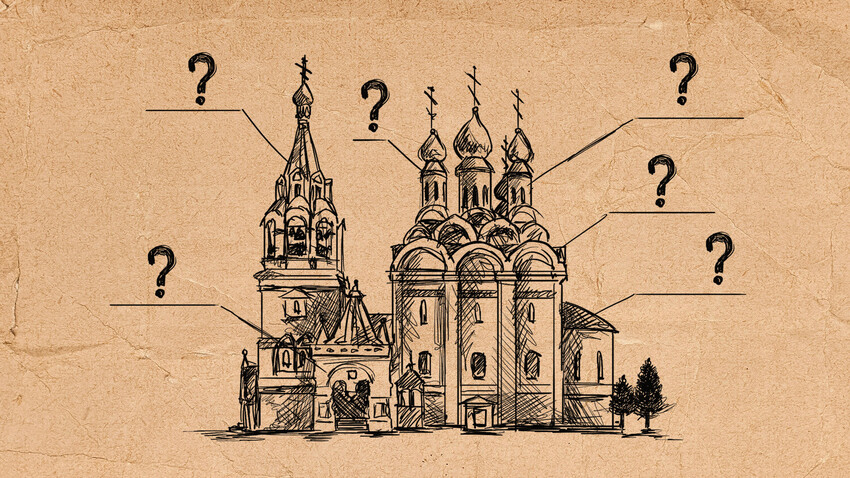
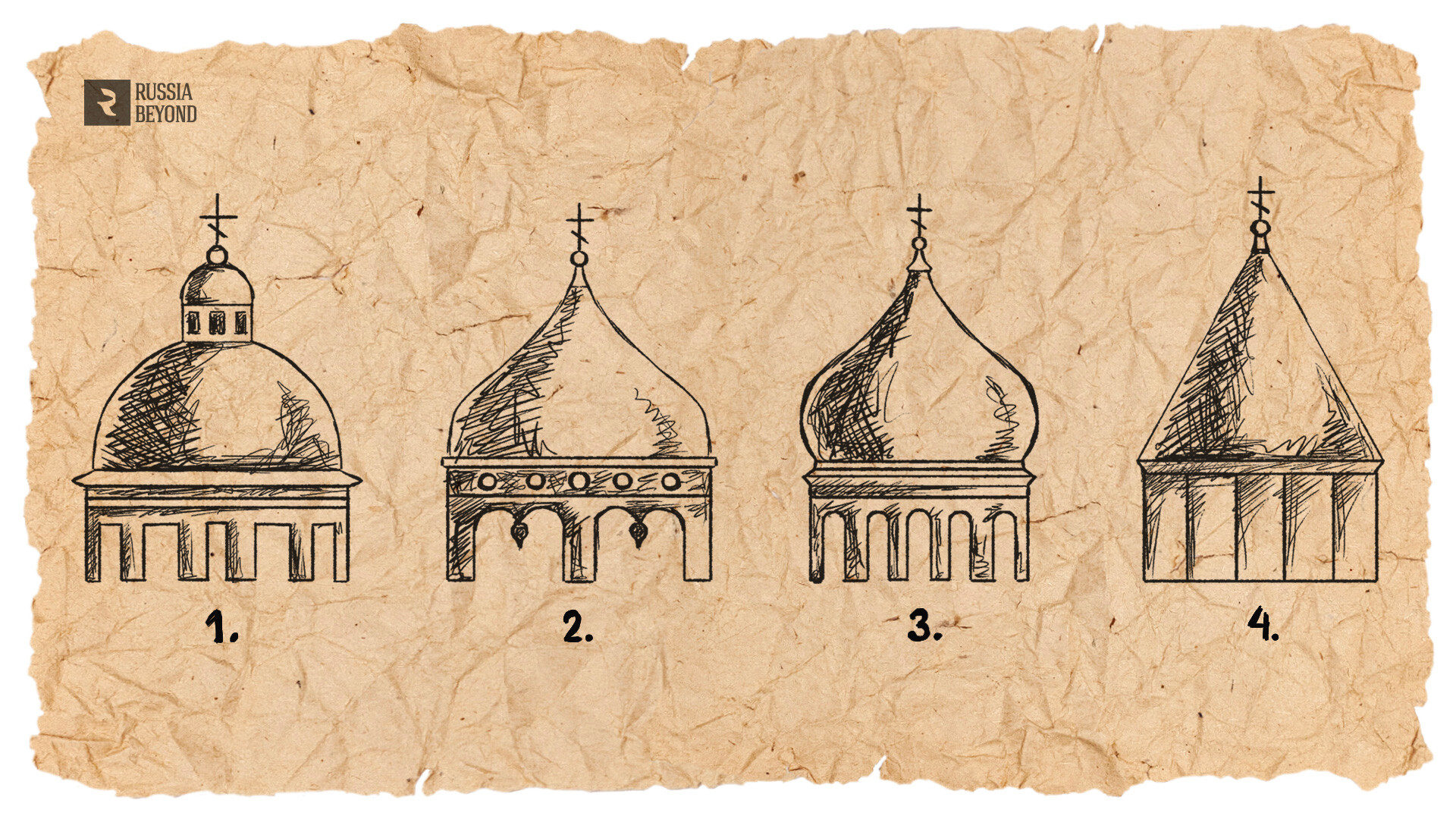
The most typical and most recognizable element of Orthodox churches is the dome, crowned with the eight-pointed Orthodox cross. The most commonly encountered ones are onion domes (3). In addition to their purely practical function (snow doesn't pile up on such a surface, which is extremely important during the snowy Russian winters when tons of snow can simply crush a building), they also have a symbolic meaning - the onion shape, pointed upwards, resembles the flame of a candle.
It is believed that onion domes began to be widely used after the construction of St. Basil's Cathedral in Moscow, i.e. starting in the mid-16th century. Many older, pre-Mongol churches – dating from the 12th-13th centuries – often had helmet-shaped domes (2).
From the late 16th-17th centuries, tent-roof churches (4) with small golden cupolas on top also became popular. In addition, churches often had tent-roof bell towers attached to them.
Later, churches could also have spherical cupolas (1), which symbolize eternity.
As it happens, you can tell to whom a church is dedicated based on the color of its domes.
The number of domes is also important.
Different numbers such as 11 or 15 can also be encountered, but they are, if anything, the exception.
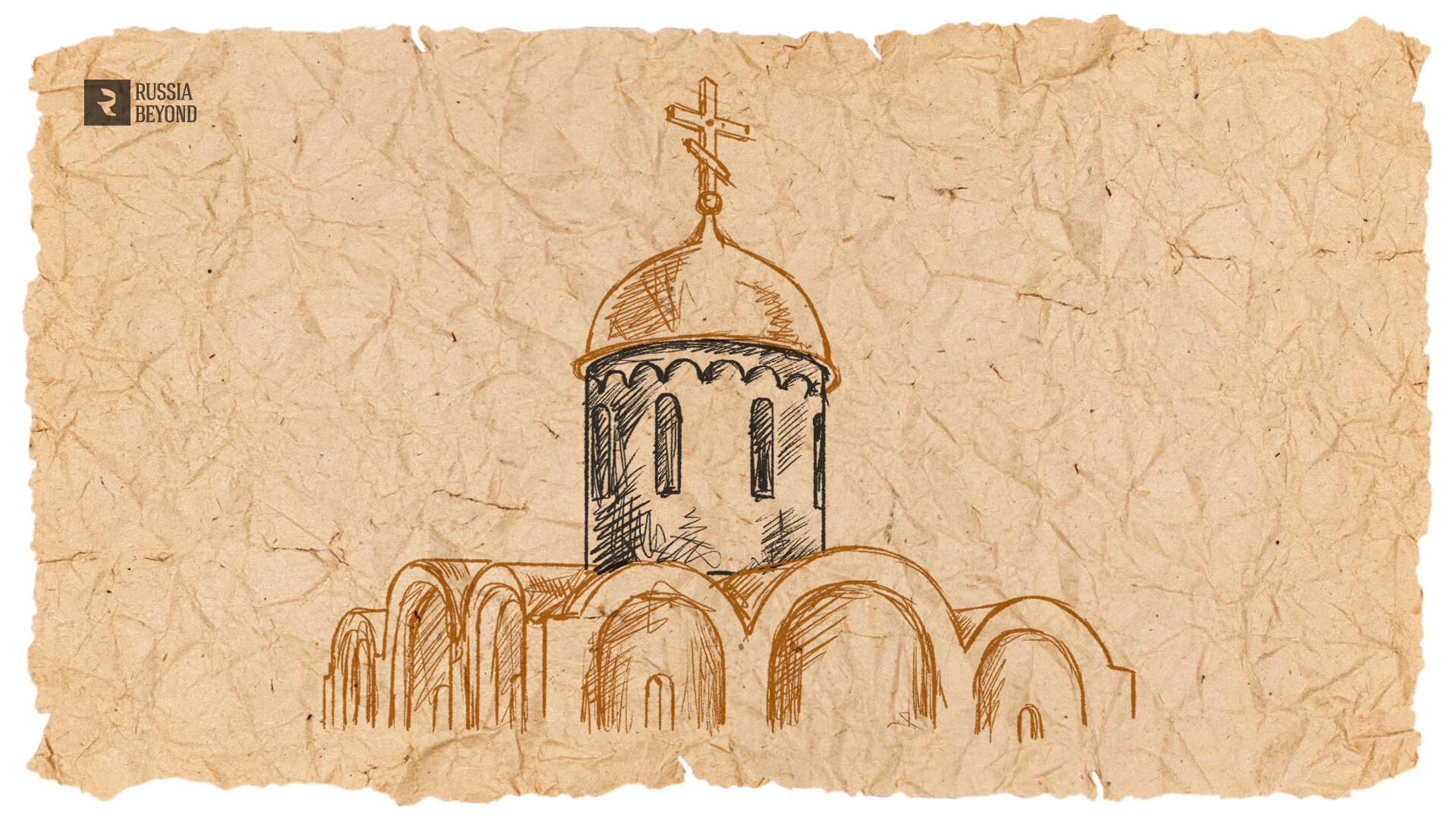
The dome stands on a cylindrical drum - the baraban (it is commonly wider in diameter than the dome itself). Most drums are pierced with narrow window openings, which are not just a design feature but also an important source of light for the church. A blind drum without windows is called a sheya (neck).
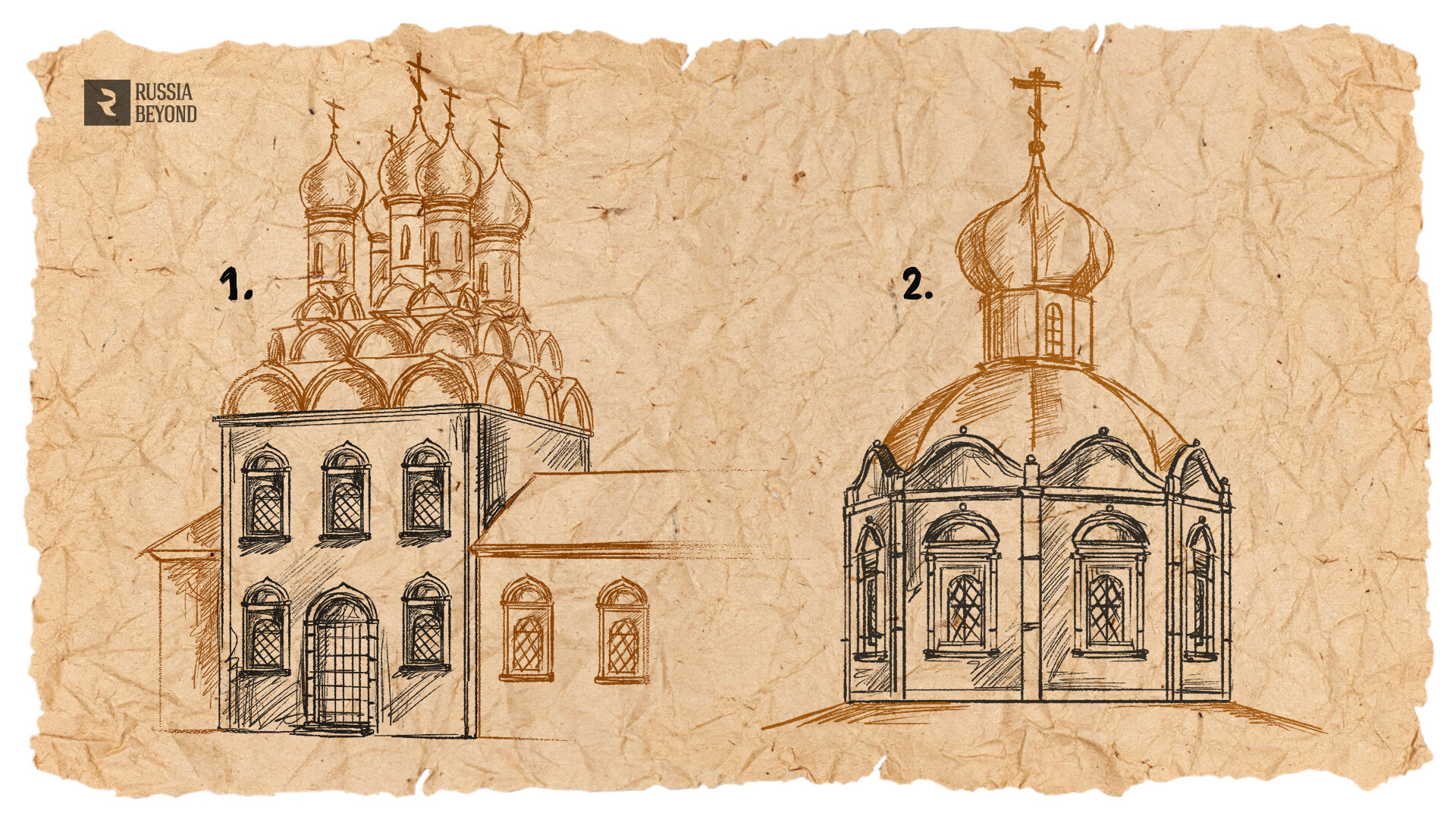
The principal volume of the church can be cubic in form (not necessarily in the strict sense of the word since it is frequently elongated in length or height) - and then it is called a chetverik (cube) (1).
There are also churches with an eight-sided design - such a structure is called a vosmerik (octagon) (2).
Many churches, moreover, have a multi-tiered structure, and one much-employed design was the vosmerik na chetverike (octagon-on-cube).
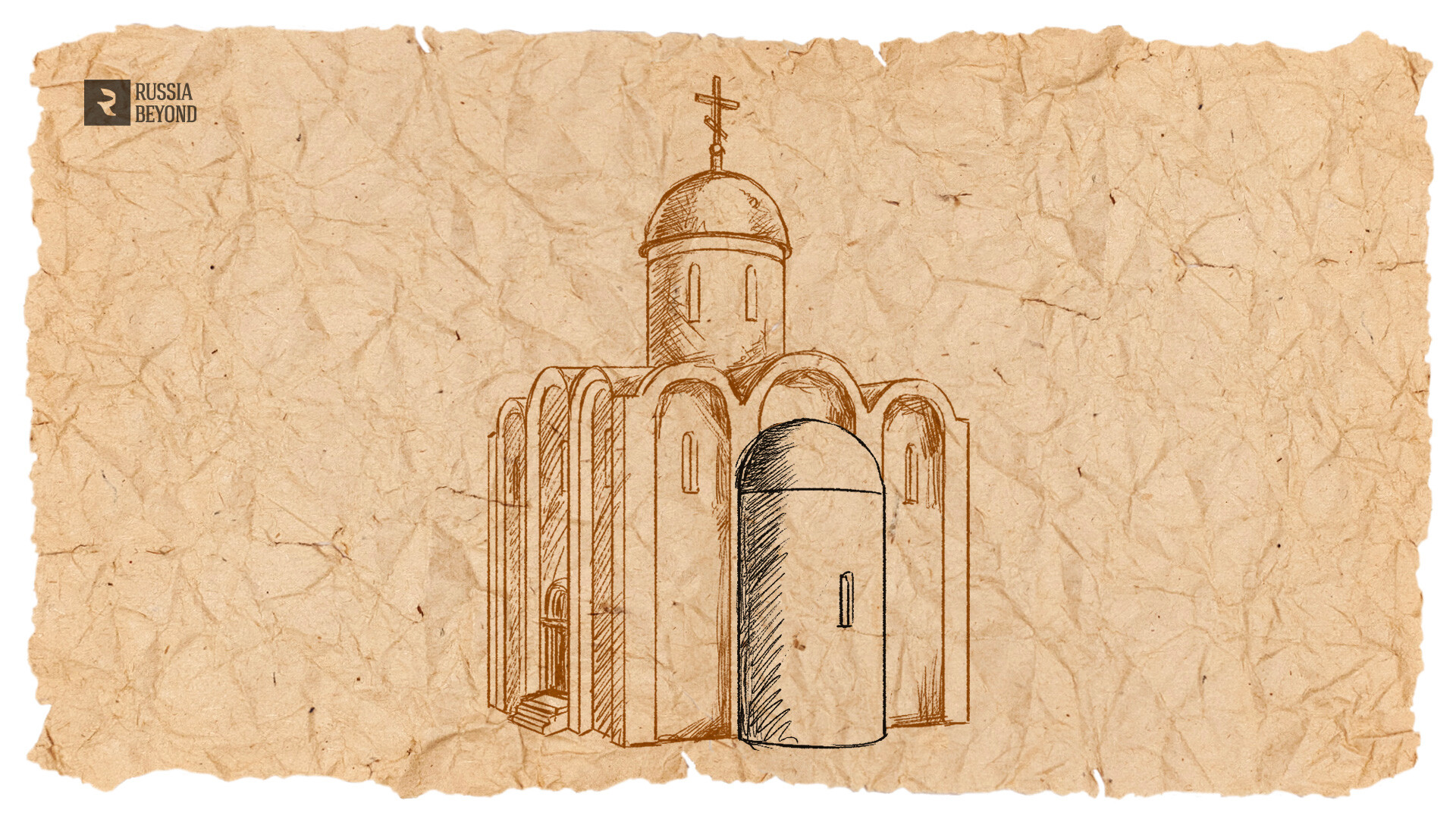
The main volume of a church can have a variety of different architectural extensions. An important part is the apse (apsida) - a semicircular projection from the building that houses the altar. It is a little lower in height than the main volume of the church. There are single-apse churches, and also churches with three or even five apses (for instance, the Cathedral of the Dormition in the Moscow Kremlin).
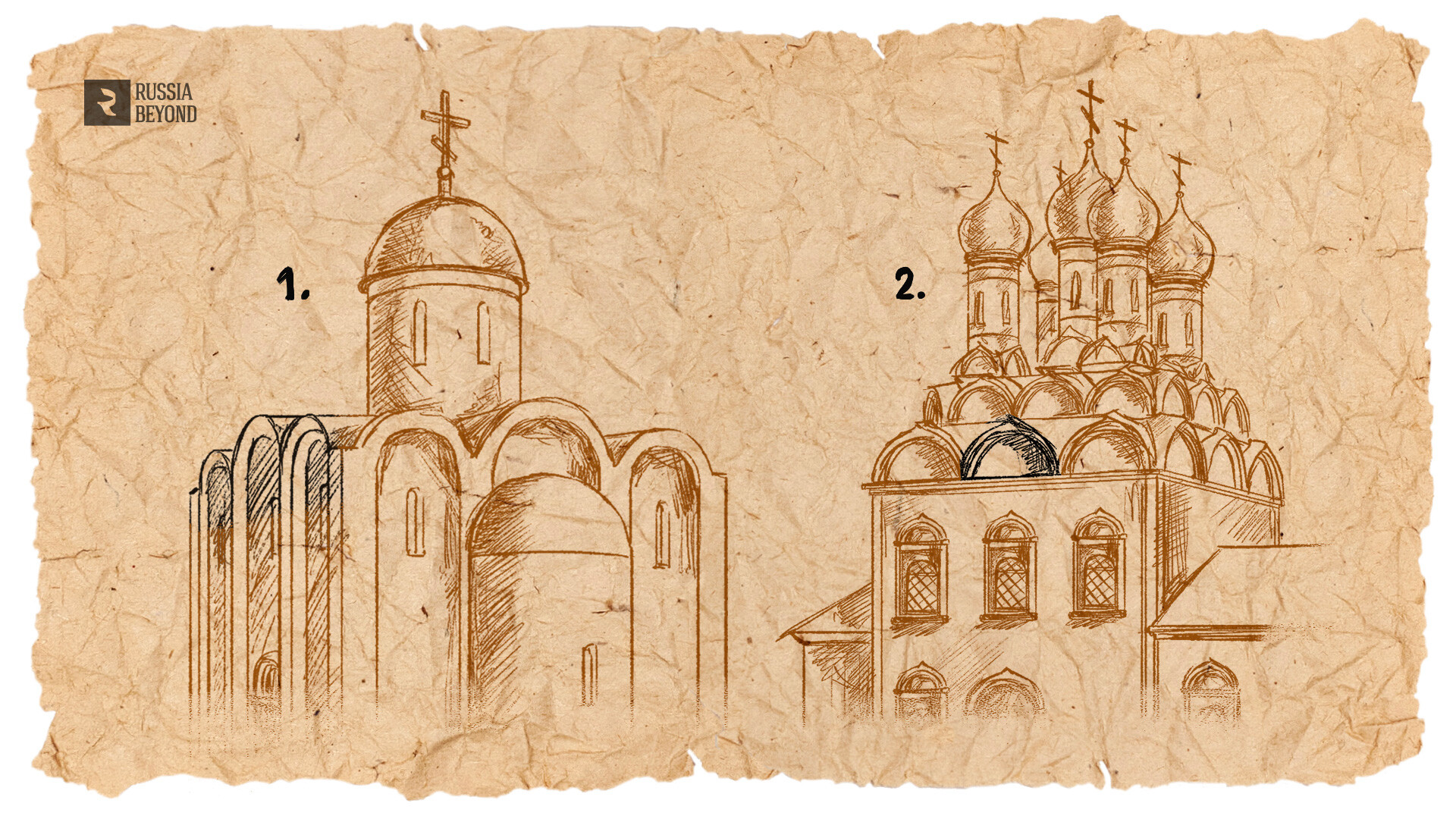
An important architectural feature of a church is zakomara (the arched gable) (1) - the semicircular or keel-shaped element that crowns one of the sections of the main wall of the church. The gables repeat the forms of the interior structure of the church. If gables are present, it means the church has vaulted roofs.
There are also false gables with a purely decorative function - these are known as kokoshniki (corbel arches) (2). In churches built in the uzorochye style (literally "pattern work" – the Russian version of baroque), there could be many of them.
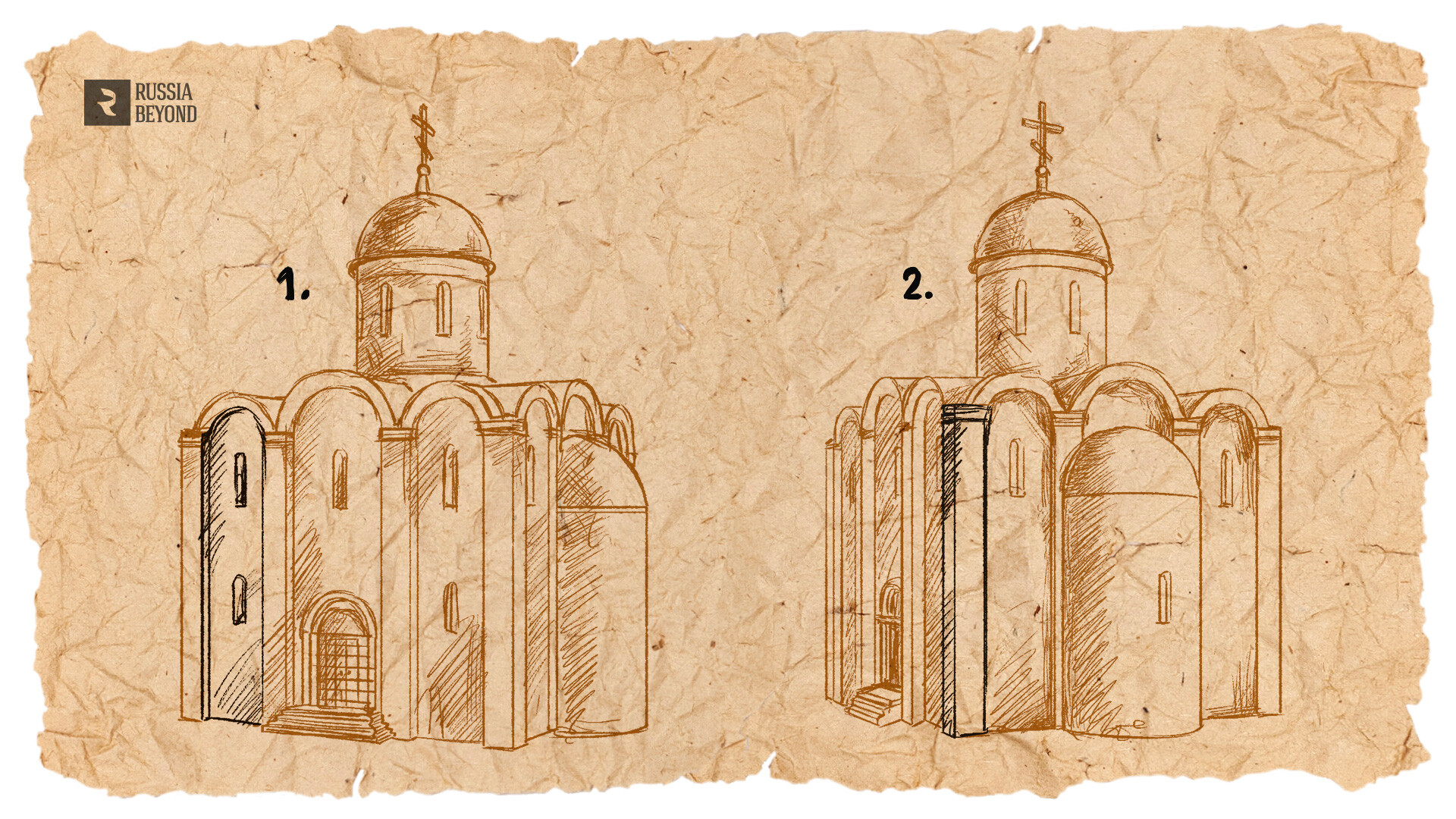
The vertical section of a wall crowned by a gable is called the pryaslo (1). Decorative columns – pilyastry (pilasters) (2)– are frequently present between neighboring pryasla, continuing the lines of the arched gables.

Certain churches in the Classical style have fronton (pediment) instead of gables - triangular double-pitched elements crowning the facade.
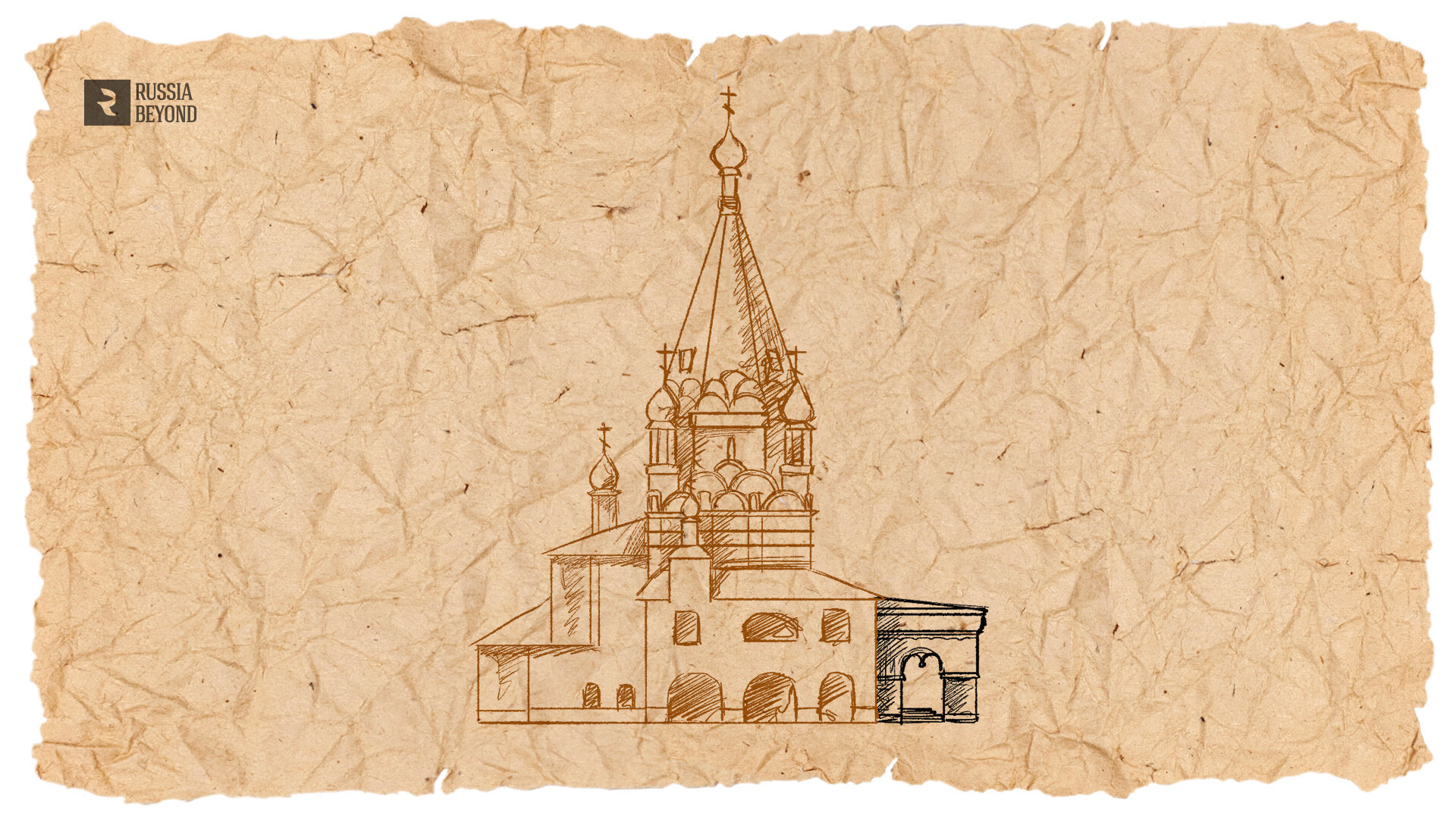
The papert (porch) is an enclosed or open wing of the church. As an ancient tradition, those afflicted by sickness or some disability would gather here to beg alms.

The pridel, or side chapel, is an extension to the main church, or a specially allocated section inside the church where an additional altar for divine worship is located. Each side chapel has an individual dome. For instance, St. Basil's Cathedral has eight side chapels arranged around the church’s main chapel - making nine chapels in total. The principal one is the chapel of the Intercession of the Mother of God, and, in fact, only one of the side chapels is dedicated to St. Basil.
Dear readers,
Our website and social media accounts are under threat of being restricted or banned, due to the current circumstances. So, to keep up with our latest content, simply do the following:
If using any of Russia Beyond's content, partly or in full, always provide an active hyperlink to the original material.
Subscribe
to our newsletter!
Get the week's best stories straight to your inbox